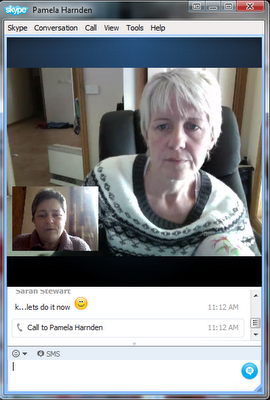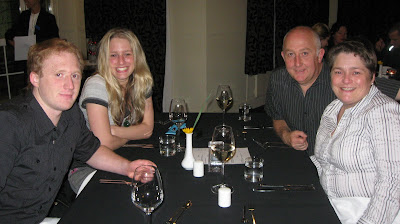
The other day I was asked if I had any tips or strategies for people who are virtual or telecommuters. By virtual commuting or telecommuting, I mean people who carry out their work online, usually from home.
Take me, for instance. I am employed by Griffith University in Brisbane, Australia as a midwifery lecturer but I live in New Zealand. My work involves developing new courses, teaching, carrying out assessment and joining school activities. I go to Brisbane three times a year for face-to-face teaching and meetings but the rest of the time I carry out my responsibilities online.
Here are a few tips for managing virtual commuting that I have learned from my experience.
1. Think outside the squareDon't be afraid to propose virtual commuting to a potential boss. But when you do, make sure you propose a clear plan about what you can do and how you will do it. A potential boss is far more likely to fall in with your plans if you can "prove" beforehand that virtual commuting is feasible.
2. Be flexibleI think one of the great advantages of virtual commuting is that it gives you an ability to be flexible in time and space. Time zones can be a little challenging, so you need to work out how you will manage that before you start. Employers will expect you to fit in with their time zones rather than the other way around.
3. Put boundaries around your flexibilityHaving said that it's good to be flexible, you also have to think how you manage that flexibility. On the whole I fit my diary around the people I work with. But there are times when I need to be focused on my work and not be interrupted, so I have to make it clear when I am available or not.
4. Shared calenderIt's really useful to have a shared calender so people can see when you are free - I use
Google Calender for this.
5. Send appointmentsThe other small trick I have discovered over the last few months is to always send people an appointment from my calender to remind them of live meetings that we have arranged. I have found that people are far more likely to forget virtual meetings than face-to-face ones. So a calender reminder works really well. The other thing I have done with Google Calender is to set up appointment reminders that get sent to my cell phone.
6. Use different email accountsI use different email accounts, one for general business and one that is associated with my Griffith work. In one way it is annoying because I have to keep checking different accounts. But on the other had, if I want to keep a day clear of Griffith work, I do not open my Griffith email account.
7. Manage interruptions One of the problems I find when working online is I get a lot of interruptions by people calling me on Skype, or I am easily distracted with checking Twitter or Facebook. So one of my tips is to manage your technology so you do not get distracted...turn off Twitter...shut down Facebook...only check your emails a couple of times a day...set Skype to "Do not disturb".
8. Be familiar with tools that support online workThis is especially important when you work in collaboration with others. But be mindful that different tools meet different people's needs... what suits Mary might not suit Tom.
9. Be confident with online communication toolsPeople will look to you for suggestions about what tools to use, and they will expect a degree of technical support from you. And it always goes down well with the boss if you can suggest free tools. At the same time, do not be afraid to play and experiment with different tools so you have a good choice in your bag of tricks.
10. Be mindful of the constraints that may face the people you work withBy this I mean that you need to think about things that will prevent people from engaging with you online such as institutional firewalls and
policies around use of the Internet at work. It is really well worth developing a relationship with the institution/company's IT support crew in order to bring about any change that is required.
11. Be mindful of people's skill and knowledge levelsYou also need to be aware of people's knowledge around online communication and work tools and their skill levels. You may need to do training and education around tools and processes for online collaboration eg moving people from emails to Google Docs. I have found the best way to engage people with new ways of working online is to model what I am introducing people to, and integrate the tools and processes into their every day working life.
12. Build sense of communityWhen you work online and away from a physical place of work, you miss out on all the informal team building that goes on, such as the social chat in the tea room. So it is important to think how you can get your colleagues to see you as a person as opposed to a faceless email, and how you can become part of the work community. My suggestions for this are to use live meetings as much as possible so you have chat about social issues as well as work. I also think it is very important to use webcam so people can see you and visa versa. Think about how you can encourage people to share more personal information so you get to know each other better, like sharing photos or carrying out online ice breakers. At the same time, be careful about online confidentiality.
13. Keep a record of your hoursI think it is really useful to keep a track of the hours you work online - this is for your own information as well as your employer. I often say that online work takes at least twice as long as you think it will. A transparent record of your hours will allow you to account for your time as well as help you and your employer plan for future tasks.
Do you have any comments or tips about how to manage virtual commuting?
 1. Writing habits
1. Writing habits








